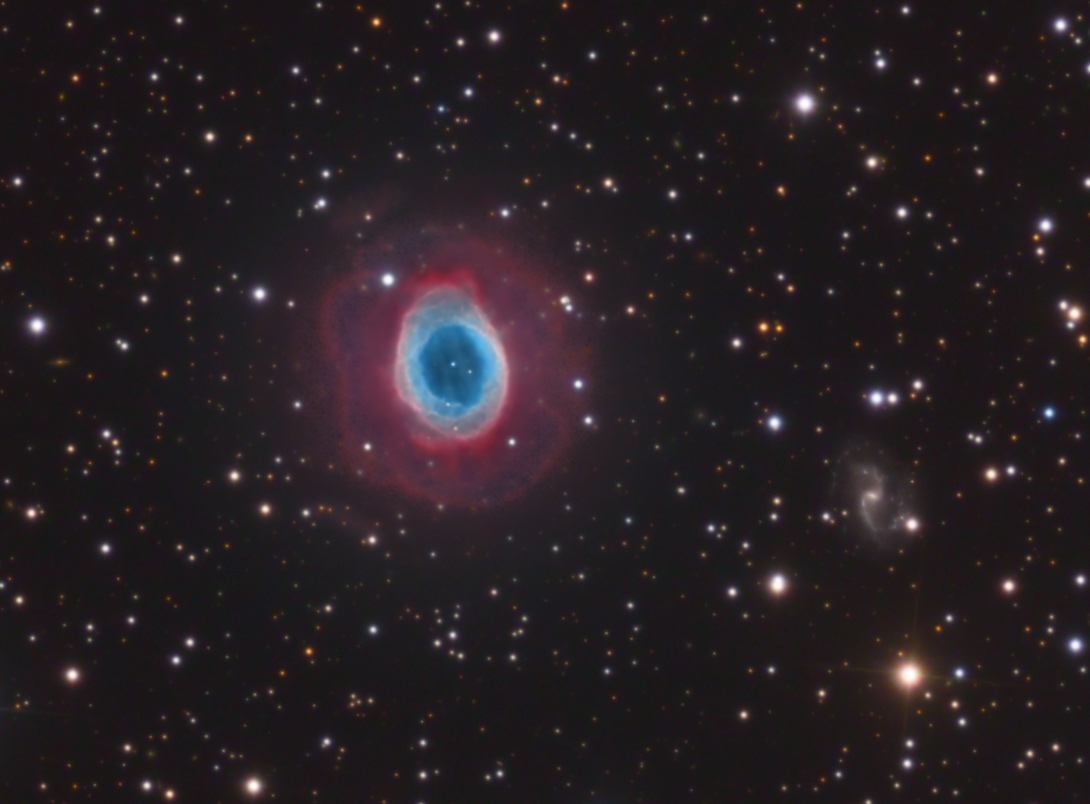

M57 (and IC1296): Stars with mass similar to that of our Sun throw off their outer gasses after fusion has stopped in their core. One of the most famous, and easily found,
of these "planetary nebulae" is the Ring Nebula, M57. It is believed that the ring part of the nebula is actually shaped like a torus (doughnut), and the center is shaped like an American football,
looked at from one end; larger scopes than mine show the outer halo to have a very complex structure. The bluish star at the center of the nebula is the old core of the star, now evolving into a
white dwarf. Nebulae of this type are called "planetary nebulae," because in older smaller scopes, they looked like small, blurry planets. It is about 2000 light years from Earth, visually
in the constellation Lyra. At that distance, the halo in my photo has a diameter of a bit less than 2 light years. IC1296, a magnitude 15 barred-spiral galaxy
located about 240 million light years from us (or 120,000 times as far from us as M57), can be seen to the lower right of the nebula.
As with many planetary nebulae, this one is rich in both ionized hydrogen (the reddish parts) and ionized oxygen (the bluish parts).
M57 is an easy visual object for even a modest telescope (or binoculars), and looks like a slighlty-oblong smoke ring (no color shows through any telescope through which I have observed M57). It is a
challenge to photograph effectively, since the ring structure is much, much brighter than the halo around the bright part of the nebula, making it difficult to show the halo without having the ring
overexposed.
I have imaged this target previously; most recently 18 years before I took this version, with fairly elemental equipment (at least by comparison), and from my own yard. I have always liked that version,
but I wanted to see what I could capture of the very faint halo; if you want to compare the versions, click here.
Copyright 2021 Mark de Regt